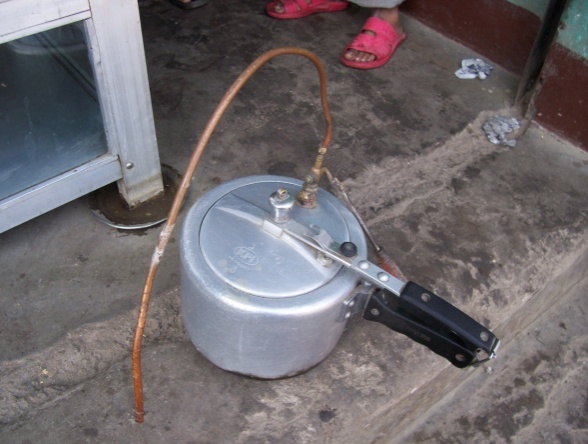Earthquake has been common catch word within Nepalese society. The devastation and destruction done by earthquake are imprinted physically and mentally on every Nepalese life and society. The loss and sacrifice made by us cannot be filled but only can be healed. The aftershock till today brings chill on every individual who has gone through so traumatic months of shaking. The earthquake not only broke people patience, it literally paralyzed us for following months. We were definitely shaken but not broken. There was mixed responses from various diaspora of society. While some were being stereotypical limiting their responses to tea talks, gossips, sided opinions, baseless speculations and sharing fruitless expertise. On other people displayed great courage, empathy and unity in immediate hours helping each other. Simply there was no caste, creed, class, language, religion, geographic divisions but only humanity to save life.
After arduous months of relief activities we are on next phase of rehabilitation and re-construction so we can return back to normal life. There are challenges and hurdles which will impede smooth functioning of such activities. We have remote area with high geographical terrains, fractured landscape, limited infrastructures and areas virtually out of connection from rest of world. The approach should be frugal and local knowledge based so we can optimized scarce and limited resources.
Frugal Innovation Approach
Nepalese society is frugal in nature we have always done more with less that is creating significantly more business and social value while significantly reducing use of scarce resources. Frugal is not cheap or mean but a whole new mindsets. It is mindsets that is able to convert adversity into opportunity to create more value at less cost for more people. This is what we need in current situation do more with less and limited resources. Frugal helps to drive resilience, adaptability, simplicity, inclusivity, empathy and passion to grow and innovate things.
Seek opportunity in adversity
Our homes and heritage sites have fallen into ruins but let’s see it as half full glass we have got chance to rebuild it with better strength. We can incorporate seismic safety into traditional construction techniques will reflect traditional aesthetics along with. We can lend massive information, education, and communication programs to educate people about the reconstruction effort. There must be active participation of community and local people to give survivors a sense of ownership of the houses and communities that were being reconstructed, but also provided them with a sense of purpose to ease their minds in the aftermath of the disaster. This might be turning point for us. Decentralization, reallocation of villages, women empowerment, speeding of development works can be done with active people participation. Basically it has changed our mentality in person.
Do more with less
We have already limited resources but we have more responsibility to do. Let’s take example of how our hospital performed during early days of weeks. They definitely had scarce and limited resources beyond odds their service were commendable. We have been provided with opportunity to uncover hidden talents and resources. Obviously volunteerism and leadership shown by youth has to be upgraded to next level. We should understands local knowledge and expertise for incorporating it into technology. The resources need and type of re-construction differs by locality and community. Therefore, post disaster recovery should be locally led, as locals know what the community needs and what can or has been locally resolved. If we recognized those resources we can carry out sustainable rehabilitation and re-construction at low cost.
Energy Optimization
The energy is backbone for nation building and without access to energy no development work can take place. While we choose energy generation technology it should really have simple mechanism of implementation. Stove/fuel, solar lantern distribution, setting up Diesel Genset, solar suitcase for health clinic electrification can be done. AEPC initiated a quick relief program to provide basic electricity services/ technologies for lighting and mobile charging. Gham Power is compiling all the incoming help requests for power in a live map. Rebuild Barpak initiative has supported funding of a 50 KVA Diesel Genset to ensure access to adequate, safe, and reliable electricity in Barpak. The generator has been connected to the distribution network and will be supplying electricity to temporary shelters, agro-processing mills, construction equipment and communication equipment and infrastructure. Ecoprise has delivered 500 solar lanterns to survivors from Kavre, Sindhupalchowk and Nuwakot. They also plan to reach 1000 families with solar lanterns from dlight and solar power water purifiers from SOLVATTEN in Sindhupalchowk, Kavre, Nuwakot and Rasuwa districts.
Coordinating assistance
Proper communication and coordination prior to the dispatch of technical and physical support will be necessary. The government needs to be strategic in requesting assistance from various interested governments and organizations so that relief can be initiated in the multiple areas where we have suffered losses. In doing so, they will need to be in constant communication with local actors and also understand the assistance providers’ comparative advantage and strategically link the two. Coordination will continue to remain key. The re-construction and rehabilitation supports should aggregate with long term development goals. Several cases of unmanaged relief are heard in media that people in Gorkha are not planting paddies this year as they have enough food stock. We should make them independent and self-sustaining not just give fish but teach them how to fish.
This approach will help to build new Nepal. We can rise above rubble and bounce back. This tragedy will help us to be united and move nation forward towards development.
